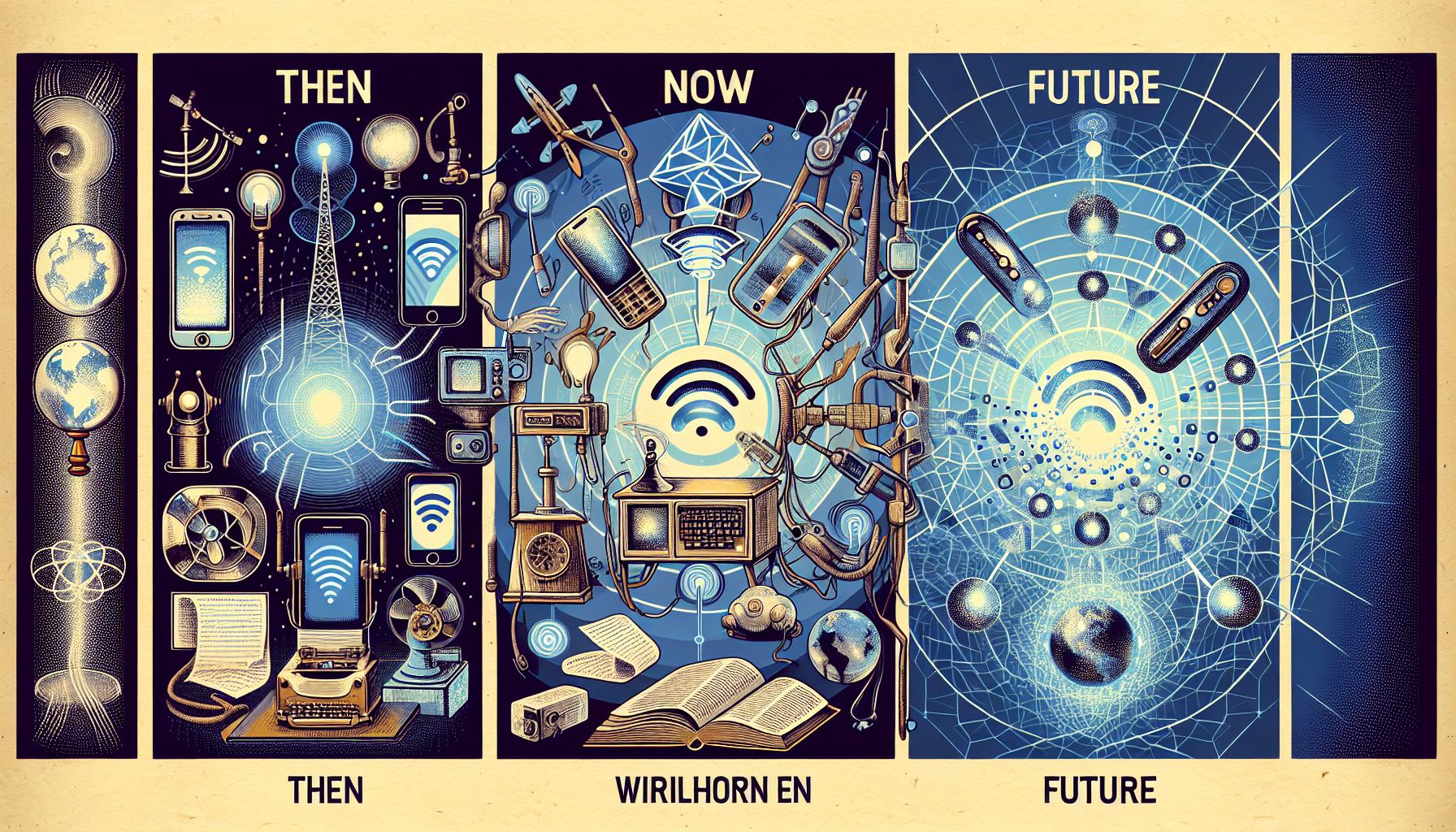📌 Let’s explore the topic in depth and see what insights we can uncover.
⚡ “From two-cans-and-a-string to artificial intelligence powered gadgets, wireless technology has come a long way. Let’s time-travel through its evolution, and sneak a peek at what the future holds.”
In our world of constant connectivity, it’s easy to forget that there was a time when we were tethered to our devices. A time when the term “wireless” was considered a novelty, not a necessity. Over the years, wireless technology has transformed the way we live, work, and communicate, becoming an integral part of our everyday lives. So, how did we get here? And more importantly, where are we heading next? Join us as we journey through the evolution of wireless technology, exploring its beginnings, its current state, and the exciting future that lies ahead. Whether you’re a tech enthusiast hungry for knowledge, or simply curious about the invisible signals that keep you scrolling, streaming, and connecting, this blog post is for you. Let’s dive right in! 🌊
🚀 The Early Days: Marconi’s Magic and Beyond

"Journey through Time: Wireless Tech's Transformative Evolution"
The story of wireless technology begins in the late 19th century with a young Italian inventor named Guglielmo Marconi. Marconi, fascinated by the potential of electromagnetic waves, successfully sent and received the first radio signals in 1895. This marked the beginning of wireless communication, setting the stage for all the wireless tech we enjoy today. Fast forward a few decades, and we see the birth of cellular networks. In 1947, Bell Labs introduced the concept of cellular telephony, a revolutionary idea that would allow a large number of people to use telephone lines simultaneously. However, it wasn’t until 1973 when Martin Cooper of Motorola made the first call from a handheld mobile phone, marking the beginning of the mobile revolution.
📡 The Cellular Network Evolution: 1G to 5G
The first generation of wireless cellular technology, or 1G, was launched in Japan in 1979. These analog networks were bulky and had poor battery life, but they were a significant step forward. The switch to digital came with 2G, launched in Finland in 1991. This technology allowed for clearer phone calls and the introduction of SMS and MMS messaging. It also marked the birth of GSM (Global System for Mobile Communications), which is still used today. The evolution continued with 3G, introduced in 1999. 3G ushered in a new era of mobile internet access, enabling users to surf the web, stream music, and watch videos on their phones. Next came 4G, launched in 2009. This technology made high-speed mobile internet a reality, allowing for seamless streaming, gaming, and video calling. It also paved the way for the rise of smartphones and apps. Currently, we are transitioning into the 5G era. Introduced in 2019, 5G promises to revolutionize wireless communication with unprecedented speed and connectivity, opening the doors to a host of new applications.
🌐 Wi-Fi: The Invisible Powerhouse
While cellular networks were evolving, another form of wireless technology was also taking shape: Wi-Fi. First released in 1997, Wi-Fi has transformed the way we access the internet, providing wireless connectivity in homes, offices, and public spaces. Over the years, Wi-Fi has evolved to support faster speeds and more devices. The latest generation, Wi-Fi 6, offers speeds up to three times faster than its predecessor, and can support a larger number of devices, making it ideal for today’s increasingly connected world.
🔮 The Future of Wireless Technology: IoT, AI, and Beyond
As we look to the future, the evolution of wireless technology is set to continue at breakneck speed. One of the most exciting developments on the horizon is the Internet of Things (IoT). IoT refers to the network of physical devices, vehicles, buildings, and other items embedded with electronics, software, sensors, and network connectivity, which allows these objects to collect and exchange data. This technology has the potential to revolutionize everything from home automation to healthcare. Artificial Intelligence (AI) and Machine Learning (ML) are also set to play a significant role in the future of wireless technology. These technologies can help optimize wireless networks, improving efficiency and performance. Moreover, the emergence of 6G is already being discussed. While 6G is still largely theoretical, it’s expected to provide even faster speeds, lower latency, and support for a plethora of new applications, from holographic communication to advanced AI capabilities.
🧭 Conclusion
From Marconi’s early radio signals to the imminent 6G revolution, the evolution of wireless technology is a fascinating journey. This journey has transformed our lives in countless ways, enabling us to connect and communicate in ways that were once unimaginable. As we look to the future, it’s clear that this evolution is far from over. With advancements in IoT, AI, ML, and next-generation cellular networks on the horizon, the possibilities for wireless technology are virtually limitless. So, while we may not know exactly what the future holds, one thing is certain: it’s going to be wireless. 💫 So, hold on to your seats as we continue to ride the wave of wireless evolution, for the best is yet to come. And remember, every time you send a tweet, stream a show, or make a video call, you’re part of this remarkable digital story. 📚🌐🚀
🚀 Curious about the future? Stick around for more discoveries ahead!
